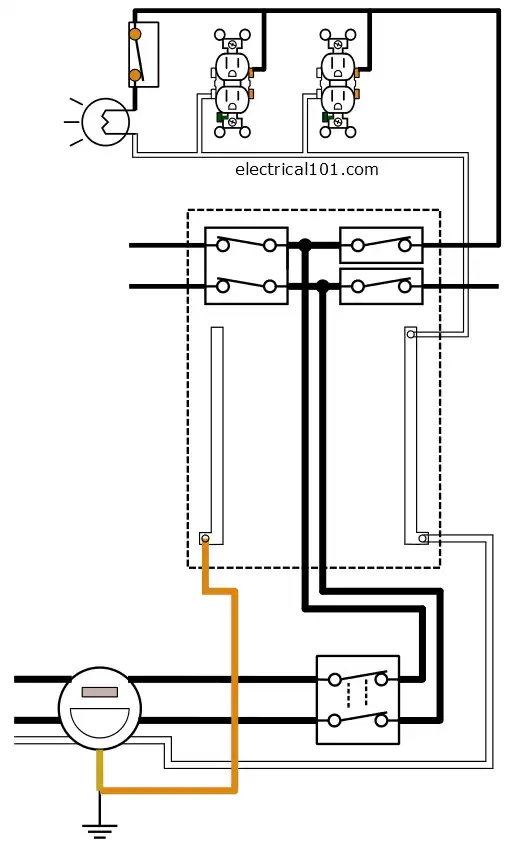
Switches | Outlets & Plugs | Ballasts | Replace Ballasts | LED Tube Lights | Troubleshooting | Basic Electricity | Misc Articles
About Privacy Policy Sitemap Copyright © 2024 Electrical101.com Terms of Use

Circuit Capacity
Circuit capacity depends on the voltage and current ratings of wires and circuit breakers. When a circuit is rated for 15 amps, the wires and circuit breakers must be rated for at least 15 amps. The circuit is rated for the lowest current rating of wire or circuit breaker. For example, if the wire is rated for 15 amps, the circuit should not have a 20 amp breaker even if the breaker trips frequently.
It is very important that a 20 amp (or higher) circuit breaker NOT be used on a circuit with a wire rated for 15 amps or less.
Electrical Circuits
From power company
Main breaker
120V A phase
120V B phase
120V B Phase
120V A Phase
Household Circuits Diagram
These diagrams show a typical circuit path from the power company through the main electrical panel and to the outlets (light sockets, switches, and outlets).
Single pole circuit breakers
Neutral
The potential difference between the A phase and B phase is 240 volts.
Ground bar
Neutral bar
240V
Ground and neutral are connected together
in one location only, at the neutral point either at the power company transformer or in the main electrical panel.
Electrical Panel
Electric meter
Two pole
circuit breaker
for electric oven, dryer and/or air conditioner
240V A & B
phases
Circuit
(ground not shown)
120V
Neutral

Electrical Circuits